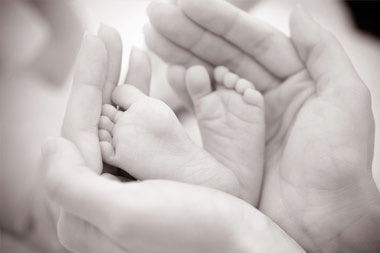Joburg Podiatrist: Ridwaan Essack
a highly trained specialists in the care of your foot and ankle.



Joburg Podiatrist: Ridwaan Essack
a highly trained specialists in the care of your foot and ankle.
Foot Health - Children

Children and their feet
Children’s feet are different to adult’s in that they are still growing, have mainly cartilage and are a different shape.
Because foot and lower limb problems are common in children and should be recognised and treated as soon as possible in order to prevent further complications later in life, it is a good idea to have your child’s feet evaluated by your podiatrist at least yearly.
It is important to understand that children may have foot problems that either do not present with pain, or the child may be too young to vocalise their discomfort, resulting in problems being unintentionally overlooked.
Common foot and lower limb problems in children
If you notice that your child is limping on a regular basis, look for signs such as walking on their toes, in-toeing, out-toeing or if knock knees or bow legs are resulting in abnormal walking. Toes may also be overlapping or underlying which can be signs of an injury or a biomechanical problem.
Exercise is both physically and mentally beneficial for children, but encouraging your kids to be active is hard when their feet hurt. Many children experience injuries if they play or stand for prolonged periods, especially on hard surfaces.
Since young feet and legs are still growing and forming they are susceptible to growing pains which can be extremely unpleasant. Other problems include flat feet or fallen arches, which should be seen by a podiatrist as soon as possible as if these problems are corrected early, the tendons and muscles grow normally and result in a normal adult foot.
Many children experience problems with their skin and nails. As they are more susceptible to fungal infections and often get warts and athlete’s foot, children should wear flip-flops around the pool and showers at school and gym to avoid exposure to these infections.
Ingrown toenails are also common in children and can be very painful and debilitating. These may present with redness or pain around the area of the toenail and should be treated by your podiatrist as soon as possible. It is important to learn the correct way to cut nails and take care of young feet and hands.
Excessive sweating and smelly feet are also regular problems and can cause embarrassment for children and an unwillingness to participate in activities if it requires having to remove their shoes.
Poorly fitting children’s shoes can cause a number of problems in adults, therefore it is vital to ensure that your child’s shoes fit correctly.
Fitting footwear for your child
•Children should have their feet measured every three months.
•There should be a thumb’s width between the end of the shoe and the end of the longest toe.
•The sole of the shoe should be relatively straight rather than curved.
•The shoe should preferably have laces, Velcro or buckles and should hold the heel firmly in the back of the shoe and not allow the foot to slide forward.
•The shoe should be flexible across the ball of the foot while the heel counter should be firm and stable.
•Leather and canvas are a better material - they are more durable and breathe better than synthetic and plastic shoes.
•Shoes should ideally have round toe boxes to give the toes more room.
•No shoe should be ‘broken’ or ‘worn in’ - if they do they are either poorly designed or poorly fitting.
Growth of your child’s foot
Children under approximately 18 months grow more than half a foot size every two months. Toddlers between 18 and 24 months grow an average of half a foot size every three months. Children between 24 and 36 months grow approximately half a foot size every four months and over three years old the foot grows at a rate of half a foot every six months.
Tips for parents
•Inspect your child’s feet regularly.
•Allow your baby to kick freely so that normal muscle development can occur.
•Do not force your child to walk - average walking age is 10 - 18 months.
•Encourage barefoot walking on suitable surfaces (sand, grass, carpets) to stimulate muscle activity and development.
•Shoe and sock size should be adjusted accordingly as their feet grow.
•Any complaint should be taken seriously.
It is essential to consult your podiatrist if:
•Shoe wear is uneven.
•Lumps or bumps are evident on the feet.
•Pain in the feet and leg exists.
•Tripping or falling occurs commonly.
•Skin or toenail problems are present.

